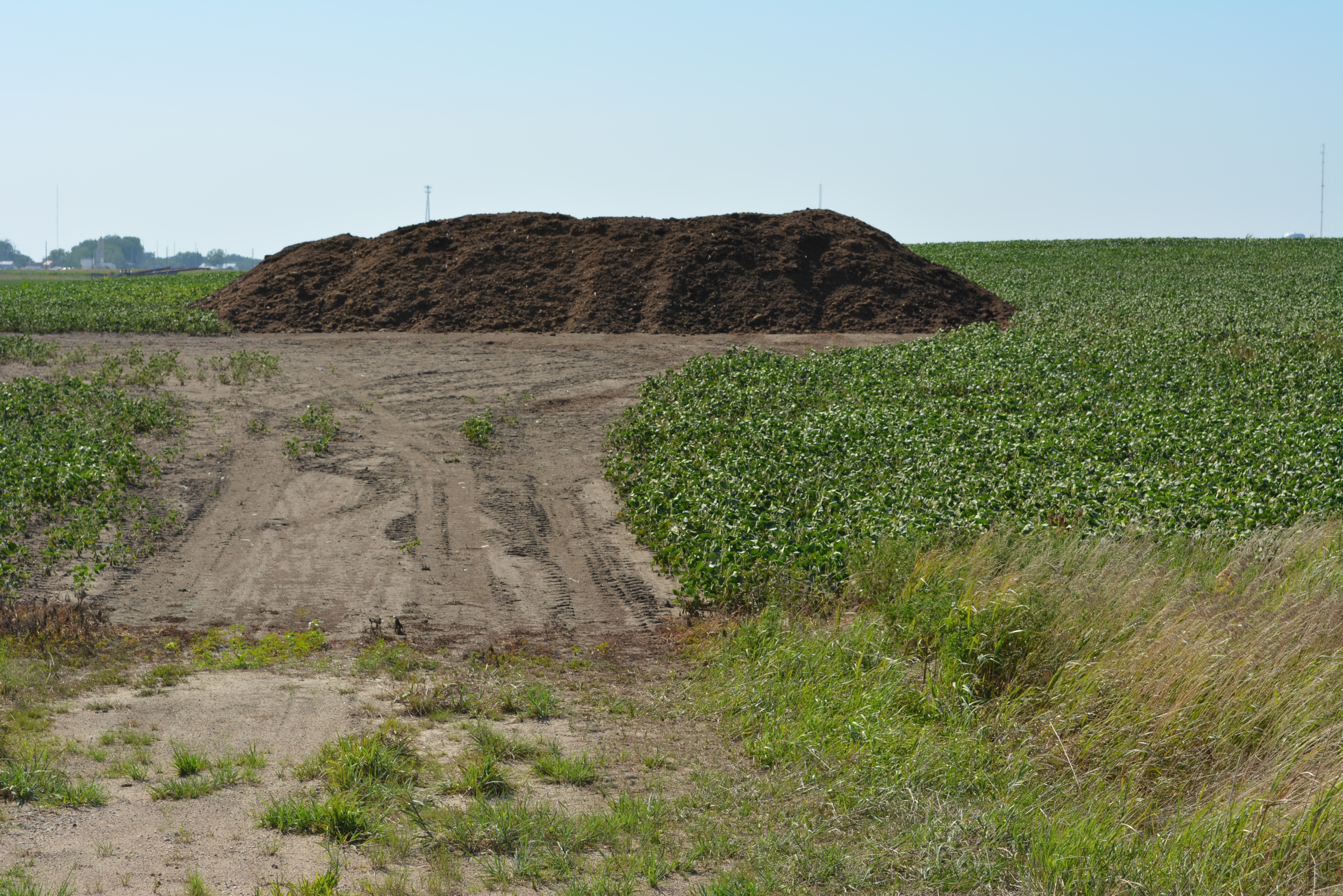
Features
Applications
Compost
Compost
Livestock Production
Manure Application
Manure Management
United States
Composting or Stockpiling – What’s the difference?
May 14, 2019 by Daniel Andersen

What is stockpiling? If you look up stockpile, you’ll find that it means a passive management of solid manure where the material is placed into a storage where it remains until it is either land applied or moved. In either case, the important points to stockpiling are that this is a passive management system, once the manure is stacked it is left alone and not disturbed, and, as a result the pile will become anaerobic.
It is only passive in the fact that we, the farmer or manager, won’t perform regular activities to alter the pile, but within the pile microbial activity will still be occurring. Despite this, stockpiling is essentially a storage technique.
In contrast, composting is an active management and treatment technique that encourages aerobic conditions to accelerate the breakdown of organic matter within the manure. This produces higher temperatures within the pile that encourages faster microbial activity and can also reduce the viability of pathogens, bacteria and seeds within the composted material. The important points here are that composting is an active management process for treatment of the manure and the process is aerobic.
The difference in aerobic and anaerobic may seem small, but there are some important distinctions between the two that result in vast differences.
In anaerobic conditions, breakdown of organic matter releases only very small amounts of energy and makes compounds like methane, carbon dioxide, ammonia, hydrogen sulfide, and many partially degraded organics (volatile fatty acids, alcohols, phenols). This means that while the pile may heat up a little, since there is little energy released, temperature increases tend to be small and breakdown tends to be slow. Also, the compounds we make tend to be ones that we can smell.
Aerobic reactions tend to release larger amounts of energy; these exothermic reactions will cause the pile to warm up and accelerate biological activity and growth. In this situation we will still make carbon dioxide and ammonia but won’t make those other compounds.
What these differences mean to us is that we will have different amounts of break down occurring. The amount of difference this makes is very dependent on the initial manure properties, with manures with high amounts of carbon in them (such as bedded manures) typically exhibiting a bigger difference. For example, studies of composting bedded cattle manure have suggested that a mass loss of 40 to 70 percent (water plus dry matter) can be achieved, while cattle manures from earthen feedlots typically range in the 15 to 25 percent range.
More recently additional topics related to manure stockpiling have come to the forefront. While poultry manures tend to have sufficient potassium in them to support crop production, certain management approaches can leave their potassium content lower than expected. Potassium is very water soluble and stockpiles exposed to the elements, such as rainfall, can have the potassium within them leached into the soil below. While this poses minimal risk for water quality, it is an important consideration for using stockpiled manure as a fertilizer source.
Good stockpiling shaping, taller rather than wider, and with sloped surface to encourage rainwater shedding rather than water moving through the pile can help maintain potassium content. Additionally, stacking sheds can help keep rainwater off the manure and help hold potassium in the manure. Similar results have been found for nitrogen, with covered or roofed stockpiles only losing five to 15 percent of the nitrogen in the pile, while outside piles losing 15 to 25 percent of their nitrogen.
These nitrogen losses also have implications for crop production. In general, most of the nitrogen lost is from the ammonium fraction, which is first year plant available. Manures that have been stockpiled in ways that have minimized nitrogen loss from the pile (covered or roofed stockpiles) tend to result in a greater fraction of the excreted nitrogen making it both to the field and ultimately into the crop through uptake and utilization.
In summary, stockpiling remains a viable manure management strategy to help get the most fertilizer value from solid manures. However, opportunities to improve management do exist with covered and roofed storages potentially providing mechanisms to help hold onto nitrogen within the manure and minimize potassium loss during storage.